Page 1 of 2
Revisiting habitat of Gastromyzon sp. "SK02"
Posted: Wed Oct 18, 2006 7:26 am
by Hendra
Managed a trip to recollecting some specimens of
Gastromyzon sp. “SK02”, since I did’nt have live specimens of its in my tank (I preserved all the specimens in formalin) and also, this place is my favorite in South Kalimantan.
Try to search another point of Crypts in this area, but I failed and very exhausted since I must walk through ascend and descending road.
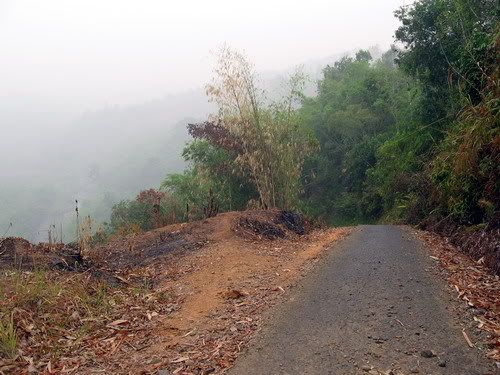
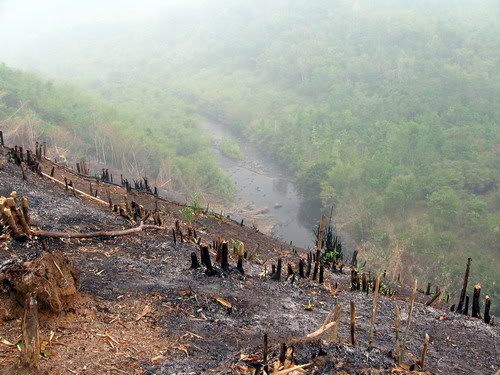

Here the stream at picture above, it reached through a very little and steepy road not so far from the top picture. Eventhough it looks perfect for hillstream fishes, very clear and cool water,but the population is not high here. So I decide to back to the point where I found borneo sucker before.
Rain still not come, the water level is low, and its easier to collecting fishes. This time I got some big specimens of
Gastromyzon sp “SK02” (about 5 cm SL).
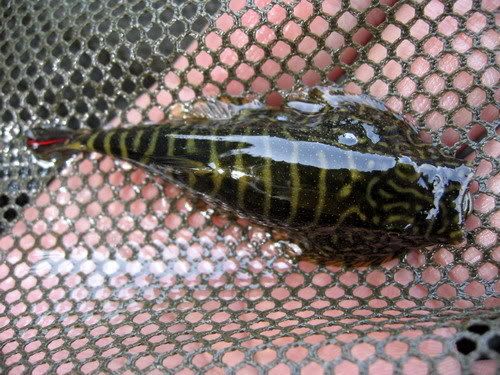
Looks at its snout !!!!!!

I surprise myself to see this because I only found small and medium size before and the snout is not so “concave”. The snout form looks similar with
G. sp. “SK01”
Here the pic of “SK01” for comparison.
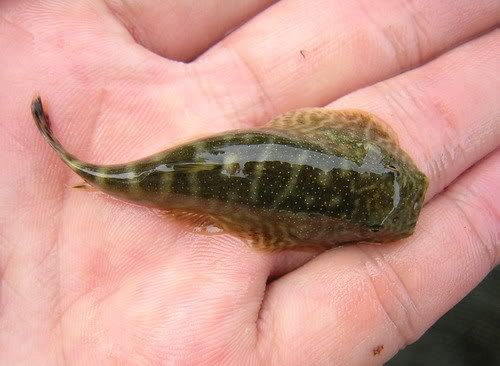

This time I also got another species of suckers, Gatromyzon sp. “SK04”, This species looks quite rare compare with “SK02”.
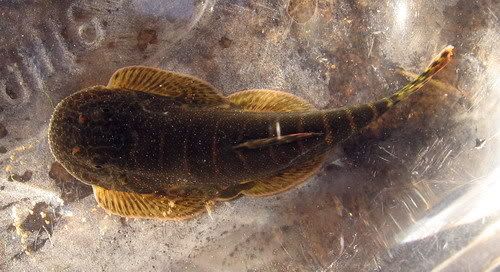

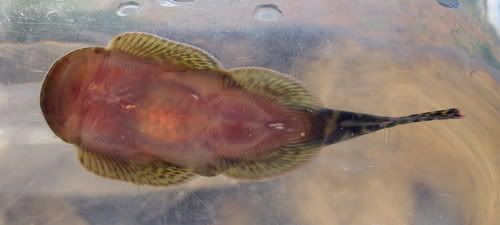
Looks quite similar with
G. psiloetron from East Kalimantan.
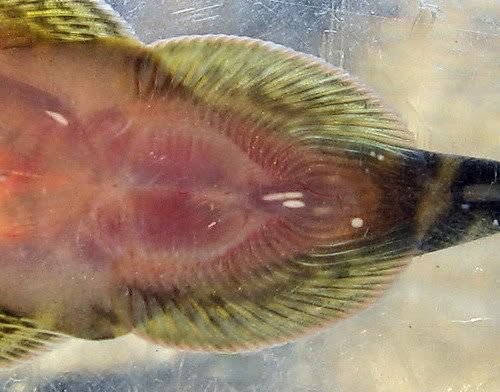
Possibly the white spots is eggs.
This species can change its color in minute from pale light brown to deep black in large specimens, meanwhile the small specimens tends to just light brown color. The adults looks have more intense yellowish color at dorsal and caudal fin and light brown top and bottom ray of caudal fin.
Local people inform me if this black suckers can grow quite big and bigger than “SK02”, local people also thought if this black suckers is the females meanwhile “SK02” is the males, they think like that because the black (big and matures of “SK04”) suckers looks always carrying eggs in its body.
The local name is “Katetipal” (sometimes they also call “tetipal”), means (more or less) sticky.
Posted: Wed Oct 18, 2006 7:32 am
by Hendra
The habitat is hillstream about 8-12 M wide, up to about 80 cm deep.
The water is very clear and the current is strong.
Temp. 26 C, pH 7.8, TDS 054 ppm.
Substrate is sand mix with gravel and rocks.
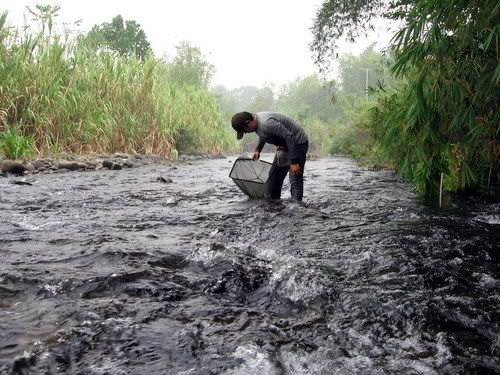
At first I go down to the stream, I can see some red stripe colors appearing for a flash.
It give me an idea to frezee my body without do any movement for sometime in the middle of the stream and make a sudden movement, the result is very interesting, many little striking red color appear surrounding me, amazing (but offcourse the fishes will

because of that )

Lifting rocks with smooth movement will not shocking the fishes, but if it saw another movement (like the dipnet which come near them, they will disappear so quickly and hiding to another rocks).
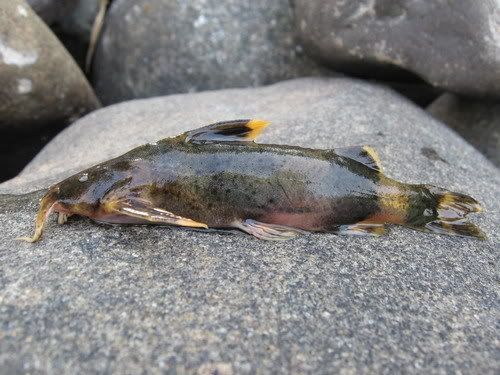 Glyptothorax sp.
Glyptothorax sp.
This is the biggest hillstream catfish I ever found, about 10 cm SL, too bad it can not last long in the container.

Bottom view with thoracic aparatus.
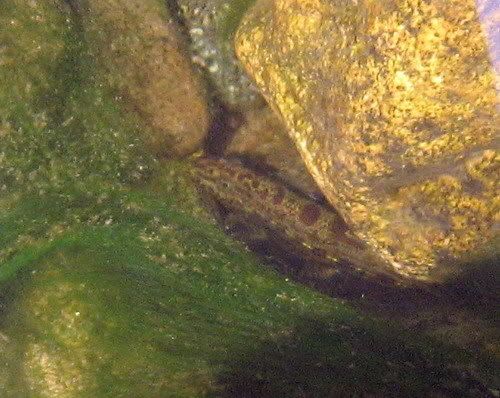 Homaloptera stephensoni
Homaloptera stephensoni also looks very common here,
Another fishes which can found in the same spot is
Garra borneensis,
Paracrossocheilus vitatus and
Macrognathus maculatus. More down river (about 1 km) at the deep part of the stream, I saw some huge halfbeaks (about more than 40 cm) from suspended bridge, don’t know what species it is.
I really love this place, so I will be back again in the future !!

Posted: Wed Oct 18, 2006 7:39 am
by Jim Powers
Great pics, Hendra!!
Thanks for sharing them.
Posted: Wed Oct 18, 2006 8:06 am
by Emma Turner
Posted: Wed Oct 18, 2006 8:11 am
by shari2
Hendra that was wonderful! Wish I could go, too.

Thanks for sharing.
Posted: Wed Oct 18, 2006 9:04 am
by Martin Thoene
This is all fabulous, fabulous stuff Hendra. I'm also pleased that you included water parameters. There's been this apparent misconception that these fish need acidic, soft water but lately I've been searching for Bornean water parameters to try and get a better idea. All I've been able to find was the fact that there seems to be a predominance of calciferous geology, so I suspected that pH would be above neutral. This confirms it and aligns it nicely with my Toronto water supply

I'm glad you're here because I wanted to ask you if we could please include your SK species in our revision of the species index that we are doing?
If we could use them, it would be really helpful if you could look at the format of the profiles and mail me as much info that fits the various headings. I would label each species SK01, 02, 03, etc. If we subsequently get positive species IDs the profiles can be updated to reflect that. You would get full photo credits and I'll certainly mention you as being the collector. Some habitat pics would be wonderful too. I think it's very important for people to understand the local conditions the fish come from.
Those big SK02 are amazing! The snout shape is very distinctive.
That picture of
Homaloptera stephensoni would be neat for its profile here as well.
Your pictures remind me of Nonn's pictures of his country. You guys are so lucky to live near such incredible scenery. And remember.....the walking will do you good

Martin.
Posted: Wed Oct 18, 2006 1:15 pm
by Graeme Robson
Amazing pictures, Hendra!!


I especially likes the big SK02. The snout shape is astounding! Thanks for sharing your pictures.
Posted: Wed Oct 18, 2006 4:43 pm
by tangtangfish
SK02 looks extremly beautiful. Hope I could have one in my tank.
Posted: Wed Oct 18, 2006 5:38 pm
by Emma Turner
I find it interesting that the water in the area Hendra collected his fish is soft and slightly alkaline - a relatively unusual set of conditions.
Emma
Posted: Wed Oct 18, 2006 5:46 pm
by Martin Thoene
Yes, I wonder if the fact that basically it's relatively recent rainfall from upstream and not been flowing for long over calciferous rocks means it tips the pH that way before much of a hardening effect has had time to take effect.
It would be interesting to see water parameters from source and downstream to see what the changes are. I would figure that the further downstream you go (assuning the geology is consistant) the harder it would get, but then there's the effect of jungle run-off of acidic water. All sorts of weird chemical battles going on I would think.
Martin.
Posted: Wed Oct 18, 2006 8:33 pm
by Jim Powers
I wonder if there is significant fluctuation in pH and hardness and if so, does it occur quickly after rainfalls.
Posted: Wed Oct 18, 2006 10:09 pm
by Mark in Vancouver
Thank you, Hendra!! My very favourite kind of post on this forum, and one informative in a practical way! It is very important for us to see the habitats. But pH and temperature make all the difference!
Superb! Terima kasih!
Posted: Fri Oct 20, 2006 2:38 pm
by Hendra
Thanks all.

About water paramater, this time I forgot the KH/GH kit, need a checklist next time.
Water from mountain area in Kalimantan usually have normal to high value of pH(especially from Karst area). It depend of the environment surrounding of the stream/river.
My friend ever found a
Gastromyzon species in hillstream in border of west and central Kalimantan (now described as
G. praestan), the water is a little brownish (tea). Will ask him if about the water quality data.
The book, “Freshwater fishes of West Kalimantan” by Tyson R. Roberts have very nice data about habitat of fishes from west Kalimantan including
Gastromyzon and another loaches.
From the book,
Gastromyzon contractus, G. ridens, and
G. fasciatus (now is
G.praestan) live in stream/river with swift current,clear water, ph 7.5, temp. 24-25 C, bottom sand, gravel or cobble stone, or rocks.
Martin, It would be nice if some south Kalimantan
Gastromyzon species also include in the species index, I also have some picture of another loach species,will mail you pic of them with some data.
Nonn and friend really a good explorer and photographer, I can not compare with them since I just an amateur with pocket camera!!!!!
Yup, you right about walking, must get some exercise so I can walk more agile and far !!!
There is interesting thing about the snout shape, many members of
G. borneensis from Sabah (north borneo) have pointed secondary rostrum meanwhile (at least 2) species from Kalimantan Selatan (south borneo) is concave secondary rostrum.

[/i]
Posted: Fri Oct 20, 2006 2:52 pm
by Martin Thoene
That would be fantastic Hendra thanks. If you go and look at one of the new profiles we've been doing you'll get an idea of the sort of information that would be useful. Any observations from keeping them in your own aquarium would be great.
If you send multiple pictures can you please make sure that it is clear which data refers to which? I want to make sure that I get it right

Some of those habitat pictures would be very useful too.
Eagerly in wait now

Martin.
Posted: Fri Oct 20, 2006 2:53 pm
by Jim Powers
Any idea if the species we get: ctenocephalus, ocellatus, stellatus, scitulus and zebrinus, are from a Karst area?
If so, they should be happy with my water, as I live in a Karst area also.























 because of that )
because of that )


